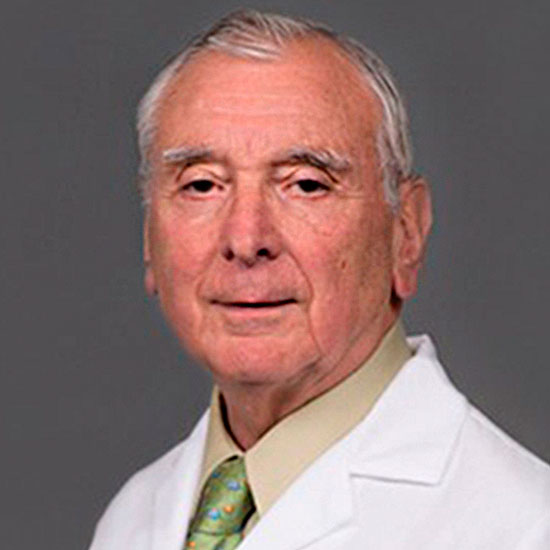Editor's Corner | The Behavioral Side of Personal Health
Most of the information we exchange with our medical colleagues is focused on sharing the most recent clinical trials and interpreting outcomes from clinical trials that can benefit our patients, along with conducting the daily conversations between a physician and his or her colleagues on matters related to patient care. Conversation with our patients as part of their medical evaluation during a clinical visit is also a major part of our daily information exchange.
A clinic visit with a cardiac patient should include a behavioral evaluation. Unfortunately, this part of clinical care often succumbs to the pressures of a busy cardiology practice. In many cases, behavioral health issues go unexamined. We spend considerable time in evaluating patients before and after a heart transplantation. But we pay little attention to the behavioral needs of patients getting follow-up care for hypertension, hyperlipidemia or stable coronary or valvular heart disease.
When these patients appear with the need for behavior evaluation, it is often associated with an anticipated procedure. Patients who are proposed for a heart transplant undergo a formal behavior evaluation to determine suitability for long-term care after heart transplantation. We've encountered patients who died from rejection, who had developed clinical depression and failed to take their immunosuppression medications. In spite of careful behavioral assessments, an occasional patient will develop a depression disorder post-transplant and will need formal psychiatric evaluation and treatment to avoid a lack of care.
While we have well developed systems of care for patients with unique psychological needs, the majority of our patients do not have access to a behavioral system of care that can interact with those who are in need of some more formal behavioral care. For older patients, in their eighties and nineties, the dominant care need is often behavioral. Care of their medical disorders is often stable, and the greatest need is to periodically assess behavioral health and interact with the patient's caregiver to assure that the patient's health remains stable.
Many patients over 90 years old continue to live at home with a spouse, relative or other caregiver who in many cases spends the majority of their time providing guidance on managing behavioral care associated with the multiple chronic disorders that often are encountered in the extreme elderly. These patients rarely can fit into the usual model of a 20-minute encounter in the clinic. Many have hearing impairment, some have a reduction in intellectual capacity that would not be labelled as dementia, but still requires added time to explain the patient's health status and provide instructions for their care. An accompanying caregiver is required for most of these patients. Conversation, instructions, and history and physical exam will often go well beyond the allocated time for a usual office visit.
It's rare to have time for a meaningful conversation with a patient during a busy clinic session. Our nurse assistants may be more adept at this role, as in many clinics the conversation before and after the physician's visit is where important behavior-focused conversation takes place. Some practices include a pharmacist who provides patients with information on side effects, drug interactions and dietary effects of medications.
How can we build behavioral care into our routine practice of cardiology? We are witnessing an important increase in measures focused on achieving a healthy life style. While we usually focus on increasing exercise, improved diet, weight reduction controlling blood pressure and blood lipids, adding an assessment of behavior status would be the best way to incorporate behavior into a complete lifestyle assessment.
We are seeing more studies aimed at improving care after the patient leaves the clinic. A key concern in many elderly patients is subclinical depression that alters behavior – and can lead to reduced medication compliance and increased sedentary activity. Engaging a patient in a strategy to increase their exercise activity should be a goal. Even patients limited by physical disabilities can often find a way to exercise. The effort is essential. This component of ambulatory care has been documented in many studies to reduce the risk of coronary disease.
Using telehealth solutions that connect the patient with their care system using text or voice communication, and use of discussion forums that engage a patient periodically in a conversation with other patients and several care givers has been shown to increase adherence to care and improve blood pressure control in hypertensive patients.
For patients we follow long-term, it's also important to discuss adverse effects of medications, as many patients will elect to stop an important medication due to a unexpected side effect. Anticipating side effects and explaining the beneficial effects of a medication to the patient may allow the patient to maintain therapy after adjusting doses or changing a medication schedule. Considering the patient's behavioral health will go a long way toward achieving successful long-term patient care.

Alfred A. Bove, MD, PhD, MACC, is professor emeritus of medicine at Temple University School of Medicine in Philadelphia, and a former president of the ACC.
Keywords: ACC Publications, Cardiology Magazine, Caregivers, Blood Pressure, Medication Adherence, Aftercare, Glucans, Depression, Pharmacists, Goals, Ambulatory Care, Dementia, Long-Term Care, Weight Loss, Coronary Disease, Hypertension, Telemedicine, Glucose, Office Visits, Health Status, Hyperlipidemias, Heart Transplantation, Heart Valve Diseases, Diet, Lipids, Hearing Loss, Drug Interactions, Life Style
< Back to Listings

